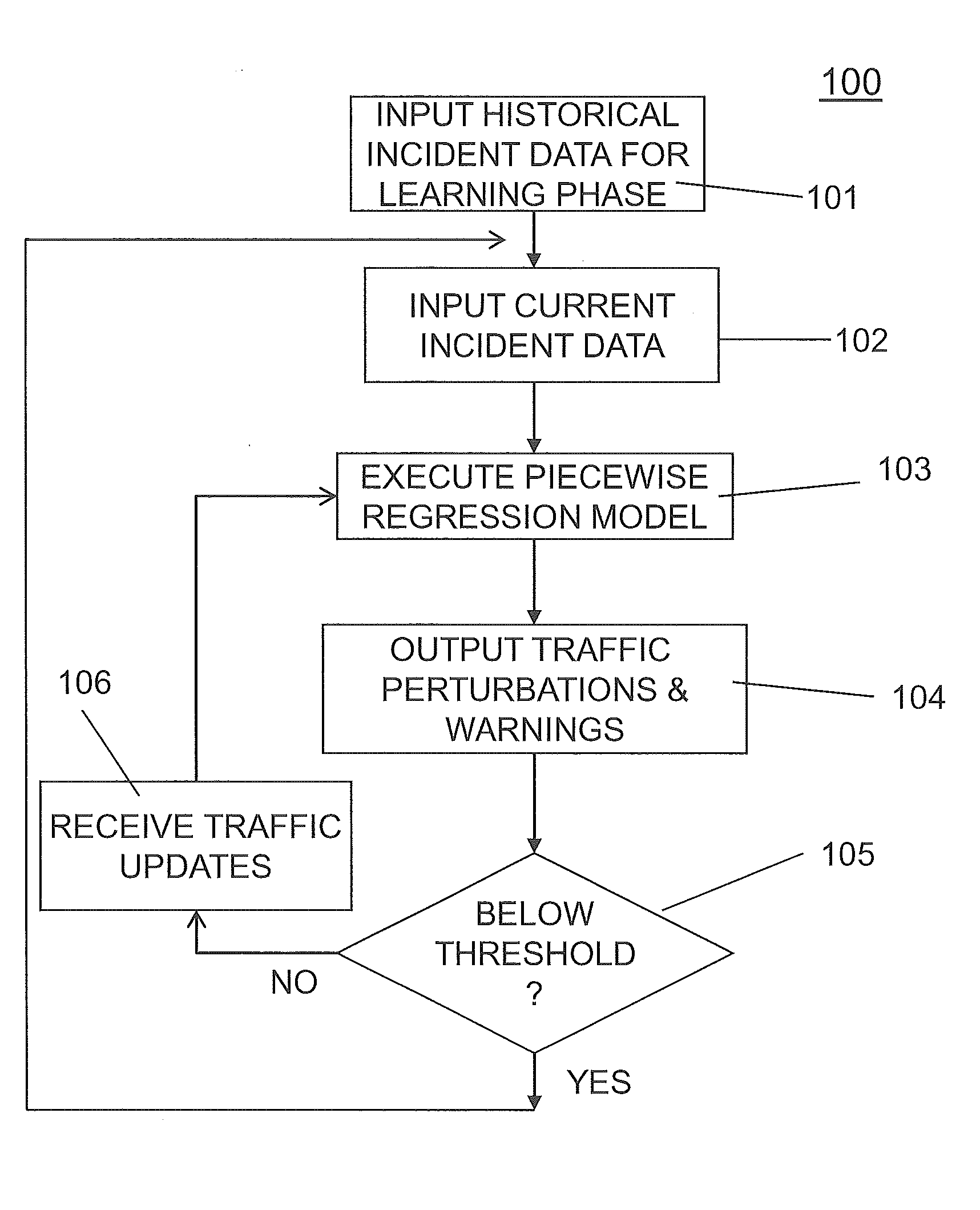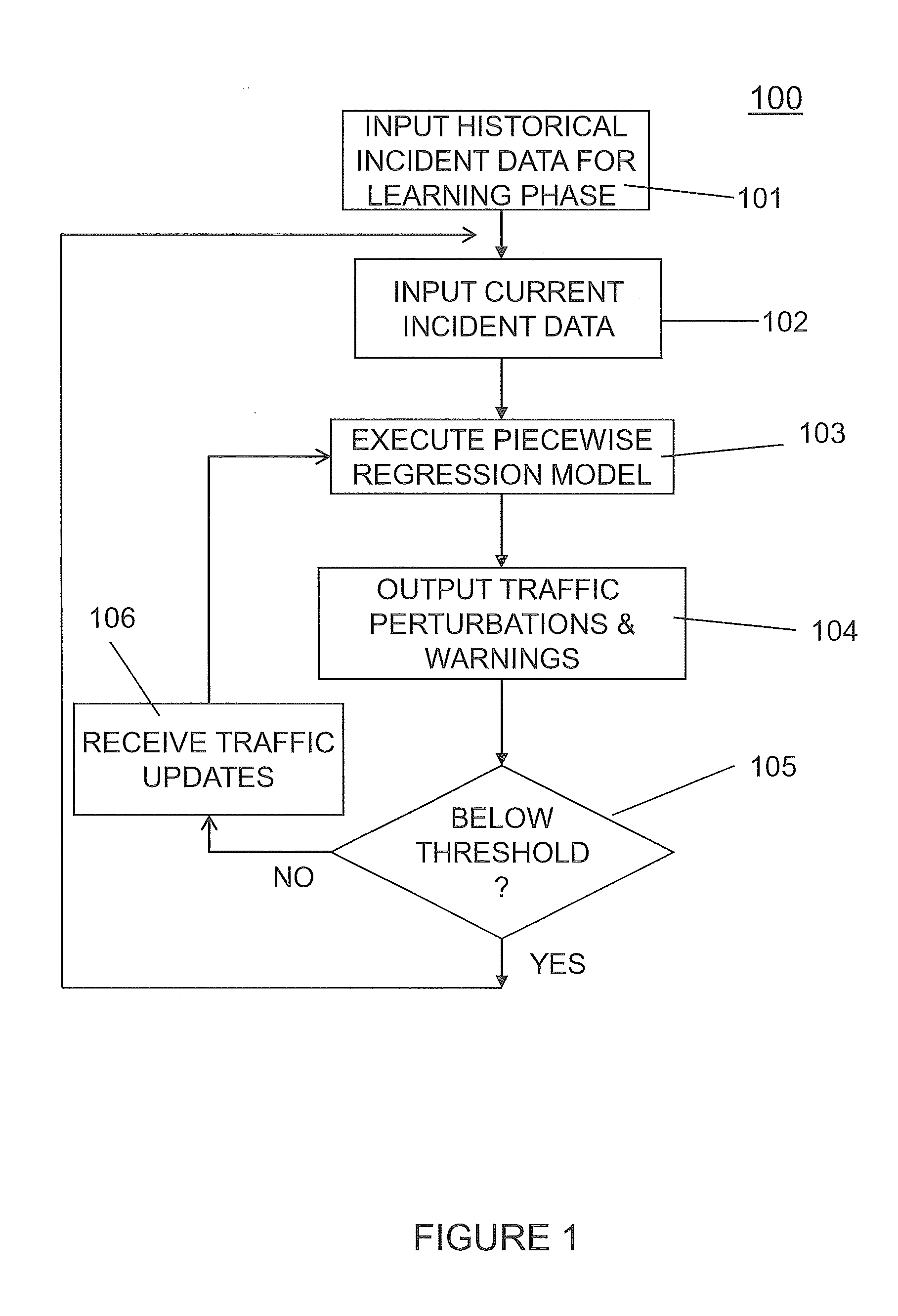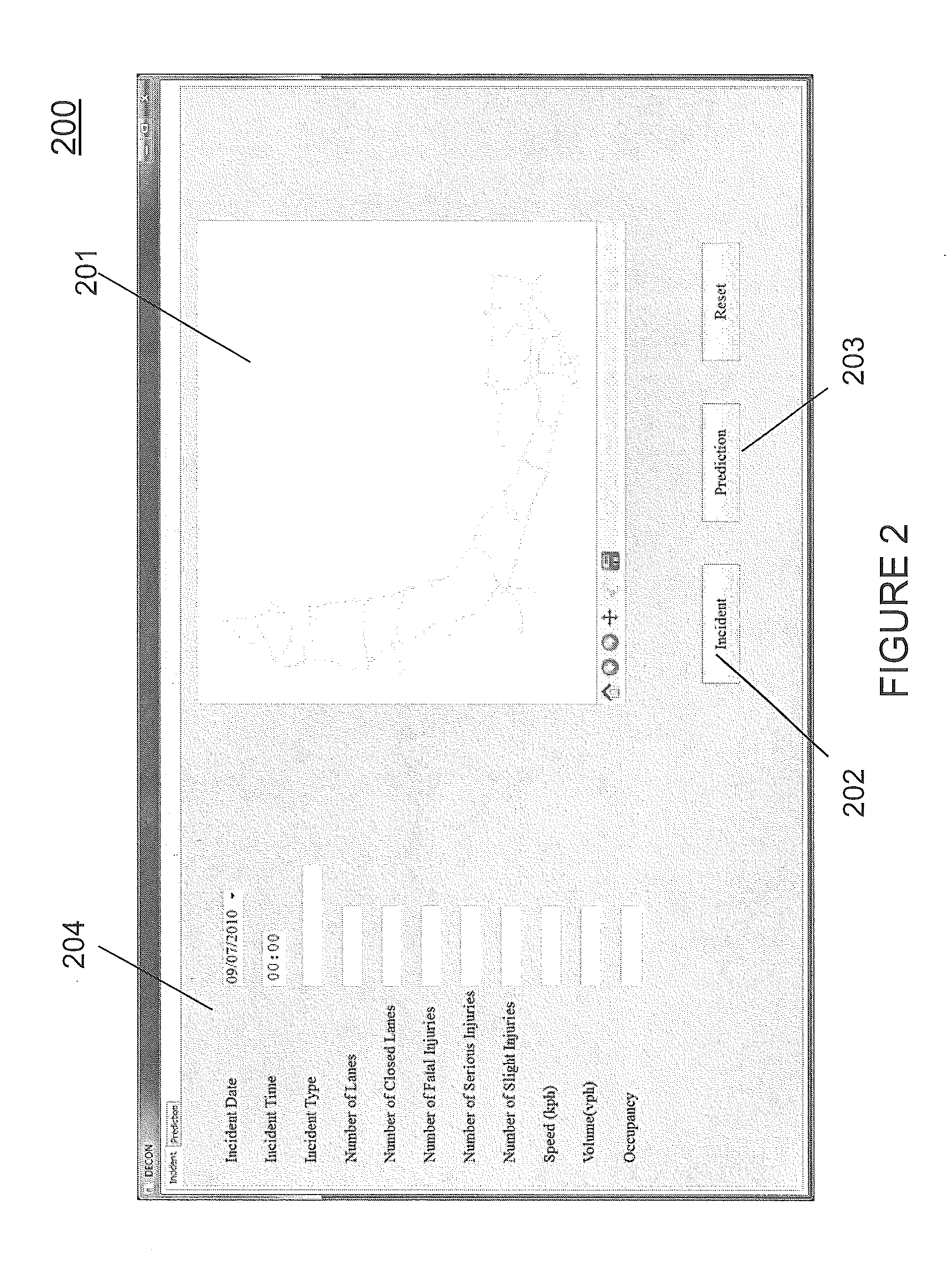Prediction of local and network-wide impact of non-recurrent events in transportation networks
a transportation network and non-recurrent event technology, applied in the field of traffic management, can solve the problem of low availability of data
- Summary
- Abstract
- Description
- Claims
- Application Information
AI Technical Summary
Benefits of technology
Problems solved by technology
Method used
Image
Examples
Embodiment Construction
[0026]Referring now to the drawings, and more particularly to FIGS. 1-12, an exemplary embodiment of the method and structures according to the present invention will now be described.
[0027]The present invention is based on using data on historical incidents in a network, their properties and posteriori observed impacts, in conjunction with data on the traffic on the network. Although the following discussion is exemplarily directed to transportation networks, it applies equally to other types of networks, even though some such networks, such as water and energy distribution networks, may be less well tracked and equipped with real-time data provision than transportation networks.
[0028]In summary, the present invention provides a robust incident classification method in which incidents are classified based on their observed duration and local impact, using a hierarchical method robust to unobserved incident features and allowing for online updates. It further uses adaptive online pr...
PUM
 Login to View More
Login to View More Abstract
Description
Claims
Application Information
 Login to View More
Login to View More - R&D
- Intellectual Property
- Life Sciences
- Materials
- Tech Scout
- Unparalleled Data Quality
- Higher Quality Content
- 60% Fewer Hallucinations
Browse by: Latest US Patents, China's latest patents, Technical Efficacy Thesaurus, Application Domain, Technology Topic, Popular Technical Reports.
© 2025 PatSnap. All rights reserved.Legal|Privacy policy|Modern Slavery Act Transparency Statement|Sitemap|About US| Contact US: help@patsnap.com



